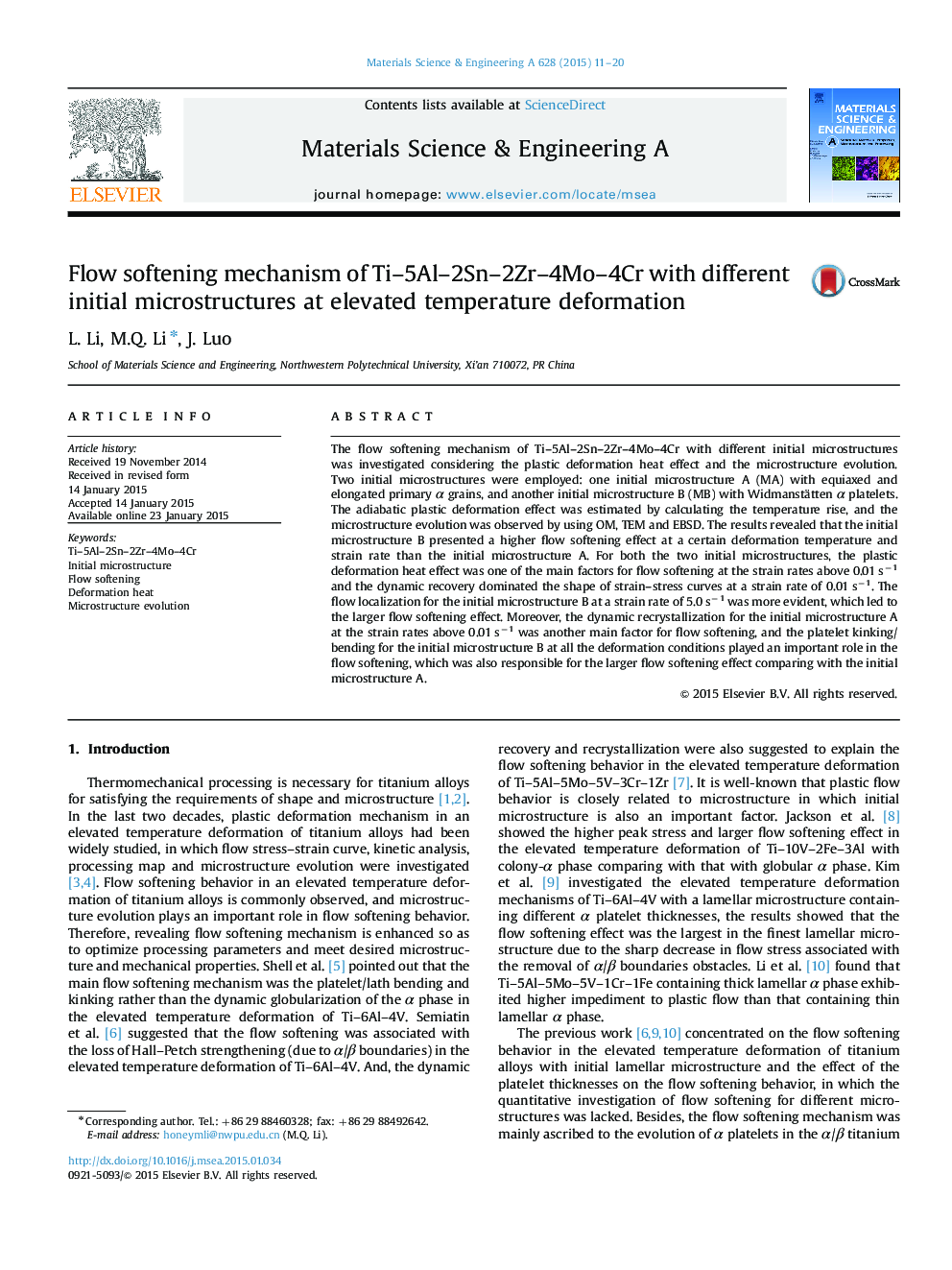| Article ID | Journal | Published Year | Pages | File Type |
|---|---|---|---|---|
| 7978247 | Materials Science and Engineering: A | 2015 | 10 Pages |
Abstract
The flow softening mechanism of Ti-5Al-2Sn-2Zr-4Mo-4Cr with different initial microstructures was investigated considering the plastic deformation heat effect and the microstructure evolution. Two initial microstructures were employed: one initial microstructure A (MA) with equiaxed and elongated primary α grains, and another initial microstructure B (MB) with Widmanstätten α platelets. The adiabatic plastic deformation effect was estimated by calculating the temperature rise, and the microstructure evolution was observed by using OM, TEM and EBSD. The results revealed that the initial microstructure B presented a higher flow softening effect at a certain deformation temperature and strain rate than the initial microstructure A. For both the two initial microstructures, the plastic deformation heat effect was one of the main factors for flow softening at the strain rates above 0.01 sâ1 and the dynamic recovery dominated the shape of strain-stress curves at a strain rate of 0.01 sâ1. The flow localization for the initial microstructure B at a strain rate of 5.0 sâ1 was more evident, which led to the larger flow softening effect. Moreover, the dynamic recrystallization for the initial microstructure A at the strain rates above 0.01 sâ1 was another main factor for flow softening, and the platelet kinking/bending for the initial microstructure B at all the deformation conditions played an important role in the flow softening, which was also responsible for the larger flow softening effect comparing with the initial microstructure A.
Related Topics
Physical Sciences and Engineering
Materials Science
Materials Science (General)
Authors
L. Li, M.Q. Li, J. Luo,
